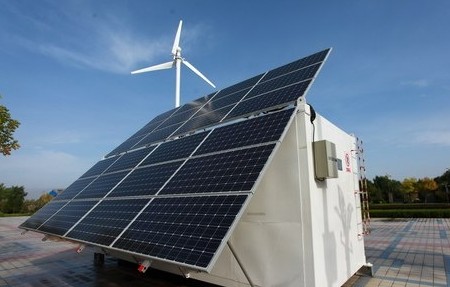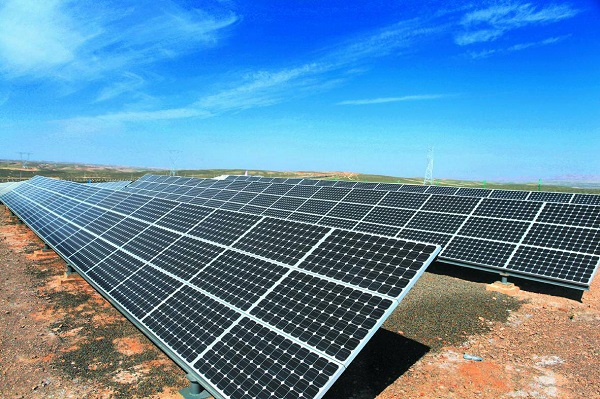- Home
- News
- Why is Photovoltaics Favored by the Market? Can Distributed Photovoltaic Power Generation has Opportunities?
Why is Photovoltaics Favored by the Market? Can Distributed Photovoltaic Power Generation has Opportunities?
Musk once said: Give me a place with a fingernail on the map of the United States, and I can create energy that can supply the entire United States. The method he said is photovoltaic power generation + energy storage.
If a large province in China, such as Inner Mongolia/Qinghai and other provinces with a large area, all sunlight and land resources are used for power generation, it can indeed provide the country’s electric power under ideal conditions.
China’s current cumulative installed capacity of photovoltaics is 254.4GW, but under the premise of carbon neutrality, clean, pollution-free/inexhaustible solar energy is currently the most promising direction.
In a report released in March this year, it was mentioned that by 2030, China’s installed photovoltaic power generation capacity will reach 1,025GW, and by 2060, the installed photovoltaic power generation capacity will reach 3800GW. The current clean energy includes hydropower/nuclear power/wind power/photovoltaic power generation, which are not large in scale. A more clear figure is that last year, the installed capacity of hydropower was 370 million kilowatts, that of nuclear power was 50 million kilowatts, that of wind power was 280 million kilowatts, and that of photovoltaic power was 250 million kilowatts.
There are so many clean energy sources, and the installed capacity of photovoltaic power is even lower than that of wind power. Why is the market so optimistic about photovoltaic power?
1. Low Cost
In the past ten years, the cost of photovoltaic power generation per kilowatt-hour has fallen by 89%, and the average cost of electricity per kilowatt-hour is one of the lowest-cost power sources of all types of power generation. The average construction cost of ground-based power stations in 2019 is 4.55 yuan per watt, at which time the electricity price is 0.44 yuan per kilowatt-hour; in 2020, the electricity price is 3.8 yuan per watt, and the electricity price is 0.36 yuan per kilowatt-hour. The construction cost will continue to decline at a rate of 5-10% per year in the future, and data predicts that it will drop to 2.62 yuan/W by 2025.
China’s photovoltaic has implemented parity Internet access. At present, only a few first and second-tier cities and other regions with fewer sunshine resources still have photovoltaic subsidies. Most regions have already achieved self-sufficiency, reduced photovoltaic cost, increased power generation efficiency, improved power generation efficiency of monocrystalline silicon / polycrystalline silicon, and the cost will be further reduced in the future.
What we are now facing is the problem of upstream shortages, and the production capacity of silicon materials cannot keep up with the consumption, resulting in excessively high costs. Photovoltaic modules and brackets are much cheaper than a few years ago.
2. Short Construction Period
The construction of the hydropower station is very difficult. It took 15 years to complete the construction of the Three Gorges Dam, and 1.13 million indigenous people were removed. Under the current situation, it is difficult to rebuild the Three Gorges, the cycle is too long and the cost is too high. Generally speaking, the construction period of large and medium-sized hydropower stations is 5-10 years, and the construction period of small hydropower stations also takes 2-3 years. The only advantage is that the hydropower station has a long operating cycle, at least for a hundred years.
Nuclear power plants are even larger projects, involving nuclear safety issues. The entire process of regulatory approval, civil engineering, installation and commissioning will take 5-8 years.
The installation time of wind power is relatively not that long, about one year is enough.
Relatively speaking, photovoltaic power generation is the most time-saving power station. Centralized photovoltaic power generation may also waste some time, but now the popular distributed photovoltaic, that is, photovoltaic power plants with the concept of power grids or even microgrids, within 3 months The construction of the power station can be completed, and the short period is very suitable for capital investment construction.
After talking about the advantages, let’s look at the disadvantages. Why is the market still full of doubts about photovoltaics?
Photovoltaic power generation is now facing three major problems. One is unstable power generation, and there is a large amount of waste light and electricity; second, power stations are concentrated in more remote locations and difficult to transport; third, centralized photovoltaics occupy a large amount of Land area.
We will analyze these three issues one by one.
a. Abandoning Light and Electricity
The reason for the abandonment of light is that there is too much power generation.
Although all local governments are curtailing electricity, not all electricity is insufficient. For example, provinces with abundant scenery resources such as Qinghai and Inner Mongolia actually have sufficient power generation. But even so, not only wind power or photovoltaics, they all face a big problem: uneven power generation.
The weather determines the amount of electricity generated. The source of photovoltaic power generation is the sun, the power generation in the daytime is definitely greater than that in the evening, and the power generation on a sunny day is definitely greater than that in rainy weather. As a result, photovoltaic power generation relies on the weather and has no autonomy at all.
Energy storage is to store the electricity generated during peak periods in some way. Energy storage technology is to make photovoltaic power generation more stable and achieve a state of peak shaving and valley filling. There are currently two mainstream energy storage methods. One is electrochemical energy storage, which uses batteries to store electrical energy; the other is hydrogen energy, which converts electrical energy into hydrogen energy, which is convenient for transportation and storage, and can be used when needed.
Photovoltaic has another drawback: the photoelectric conversion rate will decay over time. After the hydropower station is built, it may operate for a hundred years, but the components of the photovoltaic power station slowly age over time, and may retire in 15 years.
b. Electricity Transportation
Uneven power generation in various places is a systemic problem.
China has vast land and abundant resources, and power generation methods cannot be generalized. In places such as Yunnan and Sichuan, where water resources are abundant, more hydropower can be used, and wind power and photovoltaic power are used more in the northwest. Geographical location directly determines the amount of power generation. Power generation in arid areas in the northwest must be much stronger than in places with a lot of rain in the southeast, southwest, etc. What’s more embarrassing is that the resource-rich areas have fewer populations; the densely populated areas have insufficient resources. Although the eastern and southern regions have a large population, both thermal power and clean energy power generation are restricted.
The problem of uneven distribution of resources caused by geographical location is the problem to be solved for power transmission from west to east. Northwest wind power, photovoltaic power, and southwest hydropower need to be transported to the developed regions in the south of the Middle East, which requires the regulation of the power grid and the need for UHV long-distance power transmission and transformation.
UHV projects, including equipment, towers, photovoltaic cables and infrastructure, etc., are more capital investment in equipment and cables in the market. Equipment includes DC equipment and AC equipment, such as transformers and reactors.
c. Regional Restrictions
Why can only Northwestern China use photovoltaics? Because in the previous technology, the market is keen on centralized photovoltaic power generation, a large number of photovoltaic panels occupy the ground to generate considerable electricity.
Centralized panel accumulation, only sparsely populated areas such as the Northwest can have this condition. However, the land resources in the central and eastern regions are relatively precious, and there is no such condition to engage in centralized photovoltaic power generation, so distributed photovoltaic power generation is now popular.
There are two types of distributed, one is rooftop photovoltaic, and the other is integrated photovoltaic. Rooftop photovoltaics have strong limitations and low efficiency, so the promotion results are not good. Now the market is more optimistic about photovoltaic integration, that is, photovoltaic roof + photovoltaic curtain wall. Distributed photovoltaic power plants refer to photovoltaic power plants below 6MW, usually photovoltaic power generation projects built on building roofs and other idle wastelands. The distance to the load is short, the transmission distance is short, and it is easy to be absorbed on the spot, so the prospects are very promising.

